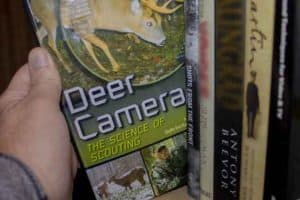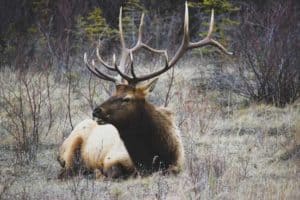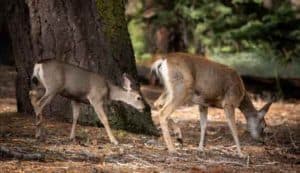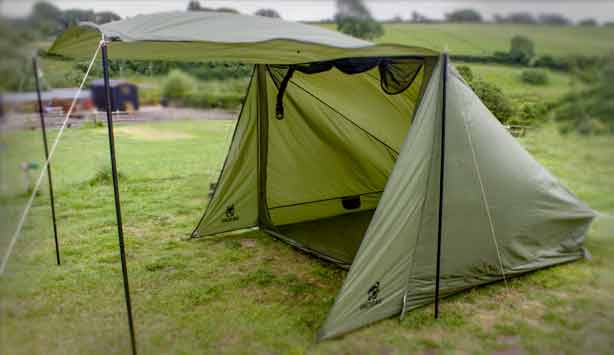This page may have Commerce Content. If you buy something from our posts, we may get a small share of the sale. Click here for more.
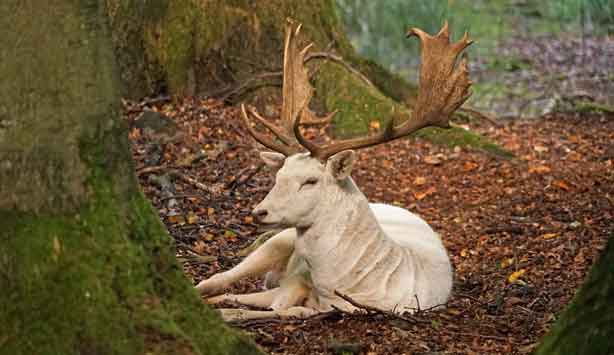

Editor & Article Writer for Outdoor Wilds
A Guide To Albino Deer
You have probably come across a number of deer in a field or wooded area as you spend time outdoors or while hiking. If you’re extremely lucky you may spot a completely white deer. Well, if you are lucky enough to see this almost mythical animal, be aware that it is a rare occurrence indeed.
Over the years, the white deer have fascinated people with its ghost-like appearance and has become part of myths and legends for centuries.
As it stands, even today people still know very little about this unusual deer. Read on to find out more info about real white deer.
An Overview of White/Albino Deer
A white deer is a typical deer that lacks color in most parts of its coat. They are white or contain plenty of white coloration. The color is either inherited or generic, and it’s unusual to see such creatures.
Usually, a white that lacks any color pigmentation at all is referred to as a ‘true albino’, compared to a generic white deer they are extremely rare.
You can identify an albino deer through its pink eyes and nose, which typically originates from the blood vessels flowing through the skin and eyes. The presence of light blue eyes may also signify albinism in deer.
The deer containing a white coat and brown eyes are commonly known as leucistic or white deer. The eyes aren’t affected because the mechanism used in producing the eye pigment differs from what the albino deer possesses.
As a result, their eyes are not affected. It is worth noting that the albino and white deer transpires due to diverse genetics that affects body processes.
The two terms (white and albino deer) are commonly used and regularly mixed up. What’s more, there is plenty of color disparity between the two types of deer, which makes the situation much more complicated. If you want to differentiate one from the other one, you need to use eye color.
What Causes Albino in Deer?
The cause of albinism is not yet definite. However, inevitable changes may happen in deer genes which may then be transferred to the children.
The fact that the resulting gene is relatively recessive or easily concealed by other genes means it cannot affect the coat color except a fawn gets a white gene from both the father and mother. Afterward, the animal will not have the ability to produce standard eye pigments, hair and skin.
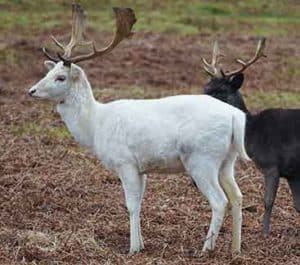
Keep in mind that most animals and people have albinism genes that are never expressed and may have been present in their entire family genetic lineage for many generations.
According to Healthline, 1 in 180,000 to 200,000 individuals are born with albinism. Still, 1 in 200 individuals carries the albinism gene. The likelihood of a child receiving an already uncommon gene from the two parents may make the train much more unlikely.
In addition, the white genes are typically referred to as the leucistic and are merely infrequent genes when it comes to the white color pigmentation.
A unique thing about these genes is that they are recessive and are frequently covered up by the normal coat color genes. Therefore, two parents with the genes need to produce in order to produce a child with the white coloring.
Are Albino Deer Rare?
Yes, as a matter of fact, the albino deer are scarce. As denoted by John Bates, an animal specialist, the chances of giving birth to an albino deer are 1 in 20,000. Other sources allege the chances are 1 in 30,000.
Notably, the 1 in 20,000 projection may be relatively accurate. The main reason for this is that it is in line with the findings of a 1959 – 1961 study carried out by Larry Ryel, a renowned Michigan biologist. Out of a 35,986 hunted deer killed in the country, he came across two albino deer.
Basically, the ratio is roughly 1 in 18,000, and as you can see, this is close to the 1 in 20,000 projection in humans. However, since the white deer are protected in various North American states, such as Wisconsin, you can expect the percentage to be relatively high.
When it comes to the states that do not protect these unusual creatures, you can expect the percentage to be meager.
Places in North America Where You can Find Albino Deer
The albino deer are primarily dominant in North Central Wisconsin, especially near Boulder Junction. There are also a few populations of these animals in Land O’ Lakes and Manitowish Waters.
The best thing about these deer is that they are well-protected and the local residents have enjoyed them over the years. Indeed, historical records show that the white deer may have existed in the Boulder Junction region since time immemorial, when white settlement began in the area.
Also, you may find a small population of the albino deer in West Central Wisconsin (Trempealeau and Buffalo Counties), Central Wisconsin (Clark and Wood counties), South Central Wisconsin (Jefferson County) and East Central Wisconsin (Port Washington). There are also other regions in the states where people can find the albino deer.
There is a population of the albino deer around the old army depot close to Seneca Falls in New York. These animals’ population increased from 200 to 800 because they were secured and put behind a fence for more than six decades.
Is an Albino Deer Weaker than the Ordinary One?
What most people allege is that the albino deer are more aggressive than their standard counterparts. Although the two colors readily mix, the white deer does the ‘dirty’ shoving work when there is food up for grabs and pushing is needed.
Is Albinism a Flawed Trait?
Since pigments take part in the development of the back or the eye’s retina, this may impact pure albino’s eyesight.
Nonetheless, according to the majority who have profound experiences with the albino deer, they say nothing is faulty or unusual with these deer. Yes, they act and look like any other deer you have ever come across. They are also remarkably healthy and live long like the ordinary ones.
Popular Posts

